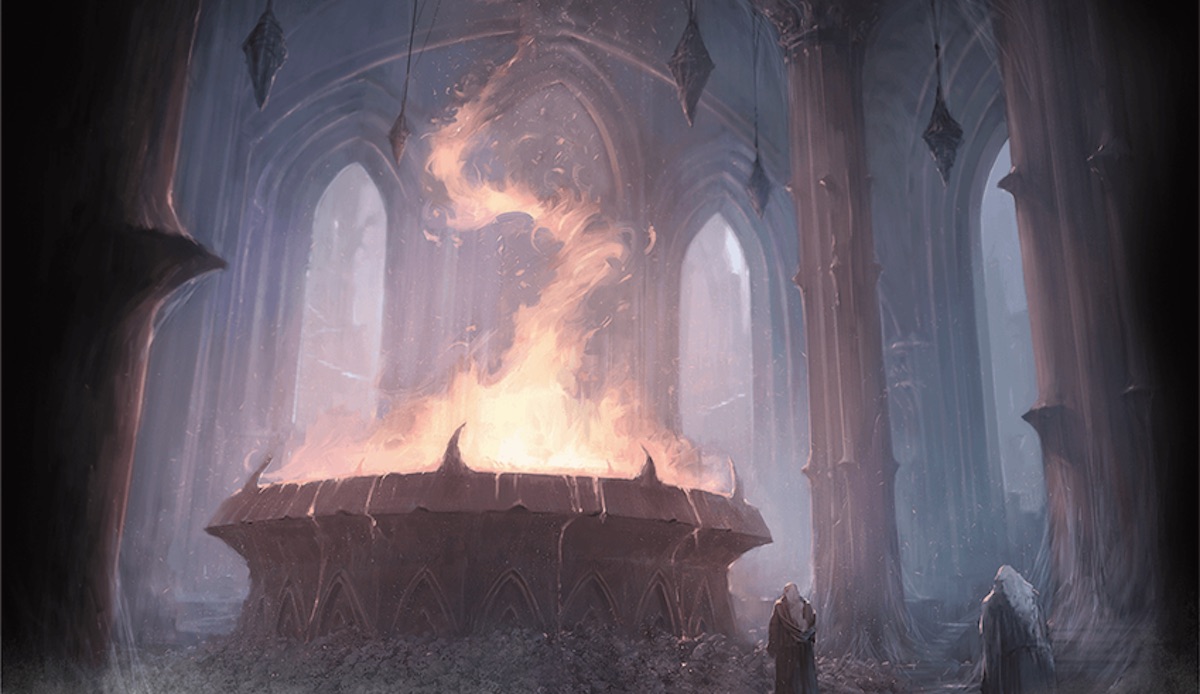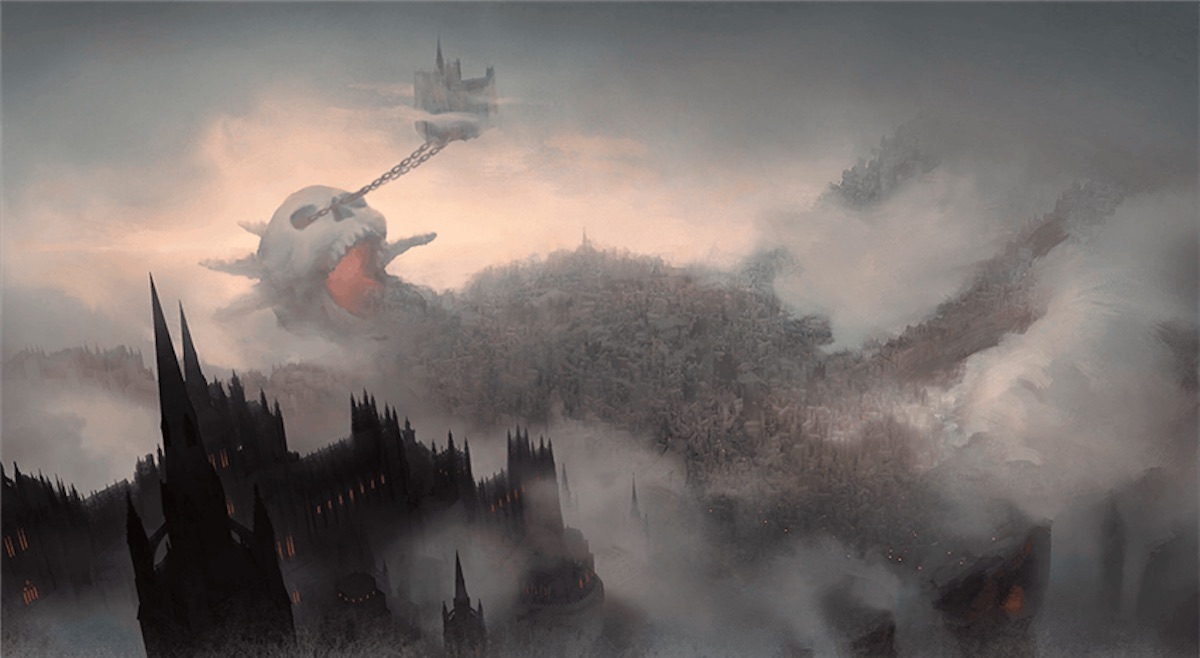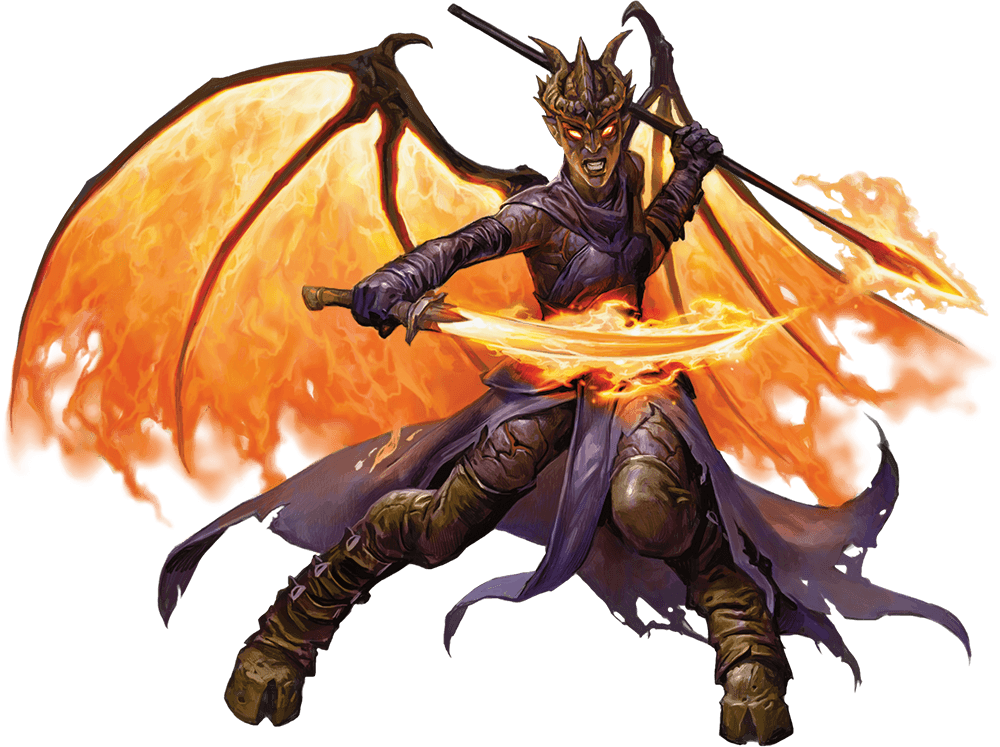New to Sly Flourish? Start Here or subscribe to the newsletter.
Making the Most of Mordenkainen's Tome of Foes
by Mike on 23 July 2018
Wizards of the Coast recently released their third monster-focused sourcebook, Mordenkainen's Tome of Foes, for the fifth edition of Dungeons & Dragons. Like Volo's Guide to Monsters, Mordenkainen's Tome of Foes is a thematic book of monsters. Instead of piling on hundreds and hundreds of monsters without a clear overall theme, Mordenkainen's Tome of Foes focuses on ancient conflicts across the multiverse. These conflicts include the Blood War between demons and devils, the struggles between the elves, the dwarf and duergar conflicts, the wars of the gith, and the dichotomy of halflings and gnomes.
The 140 different monsters in this book mostly fall into these conflicts with a few exceptions. This book also focuses on higher challenge rating monsters, with a median challenge rating of 10 compared to the median challenge rating of 5 for the Monster Manual.

This article isn't a review of Mordenkainen's Tome of Foes. Given how few D&D books get released each year, if the idea of the book resonates with you at all, it's probably worth picking up. Players will love it for the newly available character races and DMs will love it for the depth of lore and the slew of new monsters.
Instead of reviewing the book, this article will focus on how we can use this book. Some of these tips might seem obvious while others may help us look at this book in a different way. However you choose to use it is up to you, of course. These are just suggestions. Please note that I received a review copy of Mordenkainen's Tome of Foes for this article.
Read It
This might seem like one of those obvious tips but that doesn't mean we all do it. We DMs, particularly those who resonate with the ideas of the Lazy Dungeon Master, are often pressed for time. Veteran DMs might also feel like they already know most of what they might read in a book like this.
So we buy it, put it on our shelf, and rifle through it looking for new monsters we can throw at our characters once in a while. That can work, of course, but it doesn't squeeze nearly the value out of this book that we can when we read it from cover to cover.
D&D is more than stat blocks and mechanics. D&D is about building worlds and sharing stories in those worlds. This book helps us expand and dive into these worlds. The text of every conflict and every monster is packed with ideas we can use, either as secrets and clues or full-blown campaign ideas.
As we shift to a more story-focused D&D game, the lore of the monsters and the conflicts that surround them become more important than their stat blocks. If you find yourself fixated by those stat blocks, take the time to read the book you dropped $50 on and think about the context of those monsters you want to drop into your game.
Finding time to read it is always tricky but there are ways we might squeeze it in. Instead of poking around on all of the social medias, we might bring our copy with us and, when we have a moment, read a chapter or even a single monster entry. If we already read for fun, we might put aside our favorite novel and read this instead.
With D&D Beyond, we can now take all of our favorite sourcebooks on the go and Mordenkainen's is no different. Being able to carry a searchable version of all of the 5th edition rulebooks on our phones is amazingly powerful. Not only will it save our backs when we're running D&D at our local game shop, but it gives us the chance to load up and read Mordenkainen's when we find ourselves with some spare time just about anywhere.
If you take no other advice from this article, take this.
Read the book.
Steal Story Hooks From the Lore
The lore contained in Mordenkainen's, both in the descriptions of the various conflicts and in the monster descriptions themselves, are packed with ideas we can harvest for adventures, campaigns, story threads, and monstrous lairs. While Mordenkainen's doesn't include lair maps like Volo's Guide to Monsters did, we can pull a million map ideas from all over the net and apply the flavor we want from the ideas we get from Mordenkainen's.

My personal favorite is the description of the Githyanki city of Tu'narath. Built within the corpse of a dead god. The whole lower half of the corpse, known as the Dragon Caves, is a megadungeon even the Githyanki don't fully understand. There are ancient things in there born before the lives of mortals. Talk about a place rich for high level dungeon crawling.
We could even set an entire mini-campaign out of Tu'Narath with an all-githyanki party sent out by commanders of the Lich Queen to recover lost artifacts, raid settlements, and hunt down mind flayers. These chapters in Mordenkainen's fills our head with all sorts of ideas.
Fill Out Your Characters and NPCs
This tip works for both players and dungeon masters. Perhaps, as a player, we have a new elf character. We could go with all of the tropes, she loves nature and the touch of arcane, but maybe we can go a bit deeper. Maybe our elven character is reaching the Drawing of the Veil and feels she is losing her connection to Corellon and the lands of Arvandor and is doing whatever she can to reconnect with the ancient lives of the first elves.
The rich history of common races like the dwarves, elves, halflings, and gnomes in Mordenkainen's let us fill out a lot of details for our NPCs and, if we're players, our characters. We might recommend to our players that they read up on these sections if running these races. The vast amount of background helps us fall into the story and go there. It helps us break away from what attribute bonus a race has and actually get into the ancient history of these races.
Beef Up Powerful Named Monsters
Mordenkainen's Tome of Foes includes many high challenge rating monsters including a huge pile of demon princes and devil lords. Wizards of the Coast chose to stick to their original monster design guidelines to build these monsters which can lead to high challenge monsters that don't really challenge high level characters. In a recent Twitter poll on the topic, about three in four responding DMs who run high level D&D games said that high challenge monsters aren't hard enough. Unfortunately, this is as true for the monsters in Mordenkainen's as it is for the Monster Manual.
This means it's up to us to empower these monsters to challenge high level characters.

Often we can increase the challenge of a battle by adding more monsters. We can add other monsters to boss fights too, though these bosses will still tend to take on the focus of the characters' attacks. So we'll likely want to tweak these boss monsters directly.
We have a few tricks we can use to keep high challenge monsters as powerful and scary as they should be. First, we can maximize their hit points within their hit dice range instead of using the printed average. According to Jeremy Crawford, this is still fully in the intended design of the monster. Maximizing hit points helps ensure these powerful monsters can survive a couple of rounds of high-damage attacks like action-surging power attacks, multiple paladin divine strikes, and sharpshooting archers.
We can actually keep this increased amount of hit points in our head when running the game. If the battle becomes a complete slog, we can reduce it back to the average to end the fight. If instead things are moving too fast, we can use the maximum to keep the fight going a little longer. This flexible range of hit points gives us a good way to manage the flow, pace, and story beats of our battles.
If we want to make our jobs even easier, we can simply double their hit points. This is outside of spec, but it's easier to improvise at the table.
To increase the monster's threat, we can maximize or double their damage as well. Instead of Baphomet's Heartcleaver hitting for an average of 21, we can maximize it to 30 or double it to 42. If you roll for damage instead of using the average (you should really try using the average), you can instead double the damage dice for a higher threat attack. This is definitely not a "legal" version of the monster at this point but it can put up quite a threat.
Many of these high challenge legendary monsters also use a lot of poison and fear-based effects. If a group of characters has access to the spell Hero's Feast, both of these threats will be completely negated. We don't want to punish our players for using this spell but we might not want the major abilities of high challenge foes negated either. Thus, we can replace fear with madness effects instead. Madness is a wonderful flavorful status effect. Like fear, we can have affected creatures make saves at the end of their turns to get rid of the effect.
For poisons, we might instead replace poison damage with another element type such as acid or necrotic. Again, we don't want to do this all the time but if a big boss's major threat is removed, we might want to give it some help.
Here's a short summary of modifications we can easily make for high challenge boss monsters in Mordenkainen's Tome of Foes:
- Maximize or double hit points instead of using the listed averages.
- Maximize or double damage on attacks.
- Replace the frightened status effect with short-term madness effects.
- Replace poison attacks with acid or necrotic attacks.
Think Less Tactically
Instead of worrying too much about building perfectly tuned encounters every time, we might follow Mike Mearls's advice and think less tactically about our game overall. Though Mordenkainen's is packed with monster stat blocks, that isn't where we have to focus our attention. We can instead think about these monsters and the conflicts in the larger scale of our campaigns.
What is the larger context these monsters play in our games? What is the overall situation going on? If the characters run into a Githyanki spelljammer in the Astral Sea, what's going on with the spelljammer? We don't have to build six to eight balanced encounters of three to seven bad guys in each encounter. We can crew the ship as the Githyanki would have crewed it and let the players interact with it as they choose.
Thinking less tactically, at least to me, means thinking less about encounter design and more about the situation in the world regardless of the characters. It's a clear focus on building the world and the situation based on the key rule of "what makes sense".
As we go through Mordenkainen's, we can think more about the world these monsters inhabit and less about what balance of monsters we want in a fight. It's a different way of thinking but one that has rewarding results.
Choose Villains
Mordenkainen's Tome of Foes is packed with mid and high challenge monsters of all different sorts. Both the initial lore and the monster descriptions give us great room for the main villains in our campaigns. Perhaps our entire campaign rises from the battles of two cults, one demonic and one hellish, both patroned by a powerful demon prince and devil lord. Grazzt is a great scheming villain on the demonic side while Zariel always seeks powerful cultists to fill her ranks. While these two fiends may never actually come into play in a lower level campaign, they might be in the background, their orders being ruthlessly followed by the cults in their service.
Filling Our Brains Full of D&D
The biggest advantage a book like this has for us lazy DMs is the giant pile of lore we can pour into our brains. Steeping ourselves in worlds of fantasy makes our brains limber for improvising while running our games. It makes our descriptions richer and more unique. It helps us share the details of our worlds when it comes up during our game. We can help players see past the stat blocks and attribute bumps of their races to understand why elves are the way they are. All of this helps us escape the real world for a little while and enjoy the worlds we share with our friends.
Related Articles
- DM Deep Dive: Monster Design with Jeremy Crawford
- How to Read Your D&D Books
- The Lazy Approach to Stronger Encounters
Subscribe to the Newsletter
Subscribe to the weekly Sly Flourish newsletter and receive a free adventure generator PDF!








